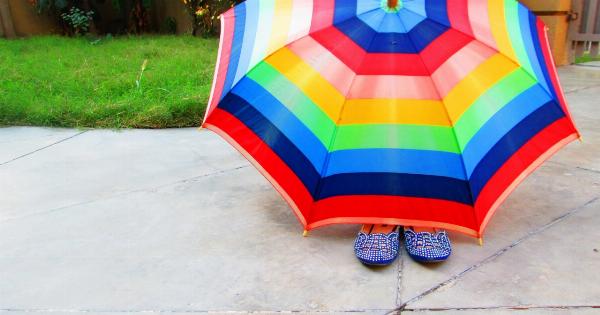The sun’s rays can be both beneficial and harmful. While sunlight is a major source of vitamin D, overexposure to the sun can lead to skin damage, sunburn, and an increased risk of skin cancer.
It is essential for parents to teach their children how to be sun smart and protect their skin from harmful UV rays.
1. Start Early
It is never too early to start educating your child about sun protection. Teach them from a young age about the importance of taking care of their skin and the potential dangers of sunburn.
Make it a regular practice in your household to apply sunscreen before going outside, even on cloudy days.
2. Lead by Example
Children learn best by observing and imitating their parents. Be a role model for your child when it comes to sun safety practices. Apply sunscreen on yourself, wear a hat and sunglasses, and seek shade when needed.
When your child sees you taking sun protection seriously, they are more likely to adopt those habits themselves.
3. Use Sunscreen Properly
Teach your child how to apply sunscreen effectively. Explain the importance of using a broad-spectrum sunscreen with a sun protection factor (SPF) of 30 or higher.
Show them how to apply it to all exposed areas of the skin, including the face, ears, neck, and arms. Remind them to reapply sunscreen every two hours or after swimming or sweating excessively.
4. Choose Protective Clothing
Encourage your child to wear protective clothing that covers their skin. Opt for lightweight and breathable fabrics that offer UV protection.
Look for clothing with a tight weave and a UPF (ultraviolet protection factor) rating, which indicates the fabric’s ability to block UV rays. Don’t forget to provide a wide-brimmed hat and sunglasses to shield their face and eyes from the sun.
5. Seek Shade
Teach your child the importance of seeking shade, especially during peak hours when the sun’s rays are the strongest. Find shaded areas in parks, playgrounds, or outdoor venues, and encourage your child to take breaks from direct sunlight.
Plan outdoor activities in the early morning or late afternoon when the sun is less intense.
6. Be Mindful of Reflection
Remind your child that certain surfaces, such as sand, water, and snow, can reflect the sun’s rays and intensify their effects. It is crucial to apply sunscreen, wear protective clothing, and seek shade even in these settings.
Reflective surfaces can increase the risk of sunburn and heat-related illnesses.
7. Stay Hydrated
Dehydration is common during outdoor activities, especially in hot weather. Teach your child the importance of staying hydrated by drinking water regularly, even if they don’t feel thirsty.
Encourage them to carry a water bottle and drink from it frequently during outdoor play or sports.
8. Be Extra Cautious with Infants
Infants have delicate skin that is more susceptible to sunburn. It is essential to keep newborns out of direct sunlight and avoid exposure during peak hours.
Dress them in lightweight clothing that covers their skin, and use umbrellas or stroller covers to protect them from the sun’s rays.
9. Educate about Tanning Beds
As your child grows older, they may become curious about tanning beds or indoor tanning. Educate them about the dangers of artificial UV exposure and the potential risks of developing skin cancer later in life.
Discourage the use of tanning beds and emphasize the importance of embracing their natural skin color.
10. Regularly Check for Skin Changes
Teach your child to be aware of any changes or abnormalities on their skin. Encourage them to report any new moles, spots, or growths to you immediately.
Regular skin checks can help detect any potential issues early on and allow for timely medical intervention if needed.
By following these tips and teaching your child to be sun smart, you will help protect their skin from the harmful effects of UV rays. Remember, sun protection should be practiced year-round, regardless of the season or weather conditions.
Together, we can reduce the risk of sunburn and promote a lifetime of sun safety.



























